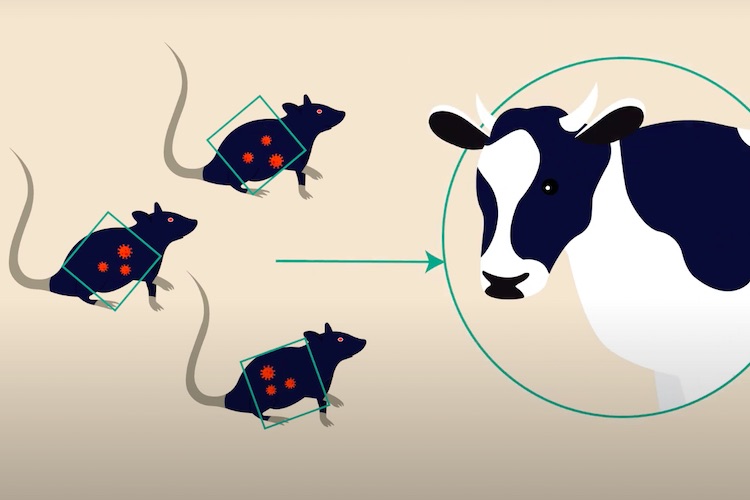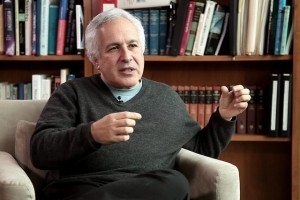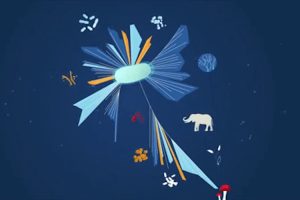Connectomics
Neurobiologist Jeff Lichtman on brain cell connections, Golgi stain, and big data in neurophysiology

In November Nature Communications published an article called “Bird embryos uncover homology and evolution of the dinosaur ankle”. We asked one of the authors, Dr. Alexander Vargas from the University of Chile, to comment on this study.
We studied the evolution and development of a unique trait of dinosaurs, the ascending process (ASC). This is a pointed region of the anklebone that projects upwards, onto the shankbone. It can still be observed in birds (which are living dinosaurs) but only at embryonic and juvenile stages: In adult birds, all bones in the upper ankle fuse completely to each other and to the shank bone, leaving no sutures. We studied the earliest embryonic development of the ASC in birds, uncovering evolutionary reversion in this trait, which makes it far more interesting than previously suspected.
Most information on bird development comes from the chicken, which is widely used as a model species. However, to uncover data that applies to birds in general, we studied development in six major groups of birds, specifically selected to understand conditions present in their last common ancestor. Thanks to a technique developed by JoâoBotelho, an ex-member of our lab, fluorescent antibodies were able to penetrate whole embryonic cartilages, rendering fluorescent skeletons that could be examined using advanced confocal spin-disc microscopy. This important technical breakthrough has allowed us to study embryonic skeletal structure with unprecedented detail.
The early cartilaginous development of the bird ankle was poorly documented and controversial. Our study reveals it is unlike any other landegg–laying animals: The ASC is actually derived from the early intermedium, which does not fuse to the tibiale, but remains separate, producing its own ossification center. This condition resembles amphibians, which are very distantly related, having last shared a common ancestor with birds a good 365 million years ago. Like modern amphibians, this common ancestor laid its eggs in water, and developed a separate intermedium bone. Based on fossil and DNA evidence, there can be no doubt that modern birds have evolved from more recent landegg-laying ancestors that did not have a separate intermedium. Therefore, a highly intriguing evolutionary “throwback” has occurred in birds, which have resurrected an ancient, amphibian-like developmental pattern in their ankle.
The reappearance of this long-lost developmental pattern in highly evolved dino-birds could be compared to finding primitive clockwork gears deep inside your latest smartphone. The adult dino-bird ankle is not at all like that of their remote amphibian-like ancestors, anatomically or functionally. Also, the ASC first evolved near the origin of dinosaurs, along important evolutionary innovations, such as upright posture and agile running locomotion, bracing the anklebone firmly against the shank. The ASC may illustrate how the resurrection of an ancient developmental pathway may have played a role in the evolution of entirely new functions.
At the end of the XIXth century, paleontologist Louis Dollo famously argued that evolution is an essentially irreversible process, with no true turning back. Even today, many researchers are cautious about accepting reversion: Resemblances to ancient ancestors may be coincidental. However, whales born with partial hind legs, or mandibular teeth in frogs of the genus Gastrotheca (which were once lost by its ancestors) can hardly be argued to be complete evolutionary novelties. Genes and molecular mechanisms are often highly conserved, even across hundreds of millions of years of evolution. This fact was entirely unknown to Dollo, but scientists nowadays often discuss how “dormant” genes can lead to the re-appearance of ancient traits. Curiously enough, the 19th century evolutionary zoologist Edward Morse had already reported the avian ASC developed from the intermedium, comparing it directly to amphibian development. This account was ignored by more modern studies of avian development, which also failed to research and document this phenomenon. It may well be that Morse’s report was simply disbelieved and dismissed as “motivated by extravagant 19th century theories”.
Nowadays, the dinosaur-bird link is mainstream science. However, the origin of birds is a deep time event, more than 150 million years ago: Any hypothesis about their ancestry must fulfill a high standard of accumulated evidence, overcoming any conceivable objections. Wide acceptance has only come recently, and even today, paleornithologist Alan Feduccia, at the University of North California, continues to challenge the dinosaur-bird link. Therefore, we should not underestimate the value of having ironed out this apparent “wrinkle” in the hypothesis.
In the future, we wish to study the molecular mechanisms that pattern the bird ankle, and establish if ancient, amphibian-like molecular patterning has re-appeared, and/or new mechanisms are in place. There is a lot of work ahead, because mechanisms of ankle patterning are still poorly known, and birds must be compared to reptiles, mammals, and amphibians. BMP-Smad4 and Wnt signaling are natural suspects; these proteins are involved in the early formation of skeletal condensations, and the maintenance of interzones that stop early skeletal elements from fusing to each other. Another step for future research is to establish at which point in evolution did the ASC begin developing a separate ossification center. Our paper has presented new data from juvenile specimens of toothed birds from the early cretaceous of China (kindly provided by Jingmai O’Connor, IVPP) that show a separate ossification center for the ASC. In non- avian dinosaurs, which represent an earlier stage in evolution, there is no evidence for a separate ASC, but most specimens are adults, and the ASC may have fused completely to the anklebone, leaving no sutures. More data from juvenile dinosaurs is required. We also aim to do CT-Scans of dinosaur ankles to observe their internal structure, since even in adults, internal “nuclei” of spongy bone tissue can provide a tell tale sign of previously separate ossification centers.
Many palaeontologists concentrate on the evolution of bony structures, and avoid discussing early cartilaginous development, because it escapes preservation in the fossil record. In turn, most developmental biologists focus on molecular mechanisms of development, and their effects on adult anatomy: They often assume that early embryological structure is a fairly simple matter that is already well known from model species and old, “classic” studies. However, new techniques and observations from more species can substantially revise and clarify this information. Much like the fossil record, reliable embryological data is required to uncover the actual evolutionary changes undergone by birds. This sets specific challenges for future research into the molecular-developmental mechanisms underlying evolution.

Neurobiologist Jeff Lichtman on brain cell connections, Golgi stain, and big data in neurophysiology

On the the evolution of the ribosome, the central dogma of molecular biology, and what lies beyond the root of...

Boston University Prof. James Collins on bacterial resistance, active mutagens, and efficacy of biocides